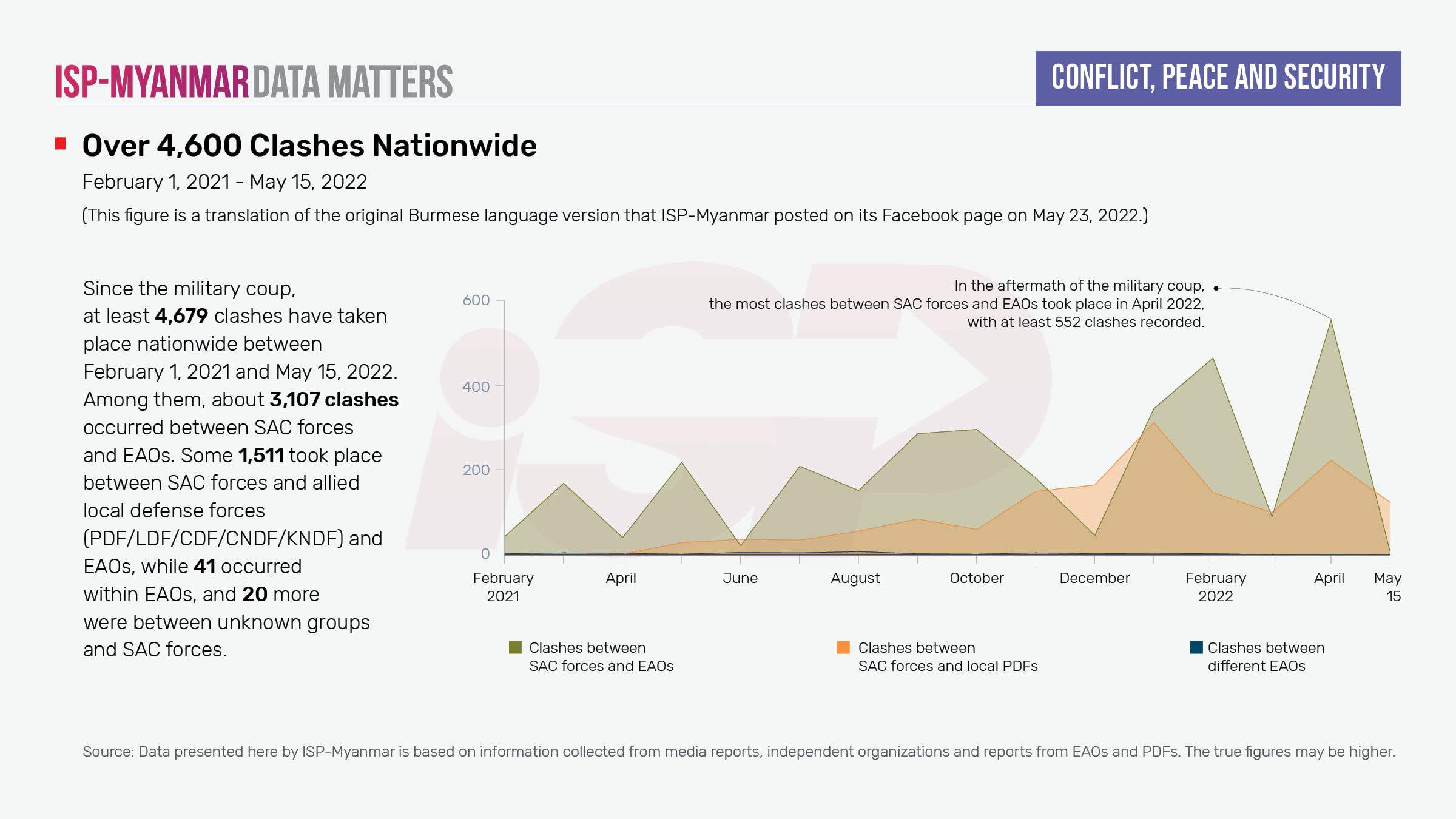Data Matters No. 20
(This article is a translation of the original Burmese language version that ISP-Myanmar posted on its Facebook page on May 23, 2022.)




Since the military coup, at least 4,679 clashes have taken place nationwide between February 1, 2021 and May 15, 2022. These include armed conflicts between ethnic armed organizations (EAOs) and State Administration Council forces, People’s Defense Forces (PDF/LDF/CDF/CNDF/KNDF) and SAC forces, clashes within the EAOs as well as fighting between SAC forces and local guerrilla forces as well as other unknown groups. A closer examination shows that fighting between SAC forces and EAOs accounted for about 3,107 of the 4,679 clashes. Another 1,380 occurred between SAC forces and local PDFs. Some 106 took place within local PDFs, while 41 occurred within EAOs, and 20 took place between unknown groups and SAC forces.
Armed conflicts have erupted across the country since the coup, with Karen State and Sagaing Region accounting for the most frequent instances of armed resistance. Based on data available compiled by ISP-Myanmar between July 1, 2021 and May 15, 2022, at least 2,432 clashes occurred in Karen State. This figure accounts for more than 56 percent of the total number of clashes nationwide. Sagaing Region had at least 439 clashes, the second highest in the country. Significantly, Karen State had the highest number of clashes, but clashes in Sagaing Region occurred in numerous townships spread out across nearly the entire region.
At least 104 clashes took place between SAC forces and local PDFs in 2022 between May 1 and May 15, with SAC forces conducting at least 32 airstrikes in conflict areas. Additionally, 5,701 homes were set on fire and at least 46 civilians were killed in the clashes. Within Sagaing Region, clashes erupted between SAC forces and local PDFs in 51 townships, killing at least 38 civilians in the first 15 days of May.
∎ Why does it matter?
By looking at the number of civilian fatalities and injuries, how they were killed and wounded, and the number of people displaced by fighting involving SAC’s forces and EAOs, or within EAOs themselves, it is possible to examine whether or not armed forces have committed human rights violations from the perspective of transitional justice. In addition, by studying the post-coup situation, further research can be conducted to examine whether there has been a change in conditions related to Myanmar’s peace process.
∎ Other relevant readings
On-the-ground reports from ethnic news organizations and other independent media groups provide regular updates about conflict situations, their impact, and the collateral damage in the aftermath of the military coup. These include reports of renewed fighting in ethnic areas, civilian fatalities, and rising refugee and IDP issues on the ground. In addition, records and reports by United Nations organizations such as the United Nations Office for the Coordination of Humanitarian Affairs (UNOCHA), and other independent local and foreign organizations also provide information about the ongoing conflict situation in Myanmar.

